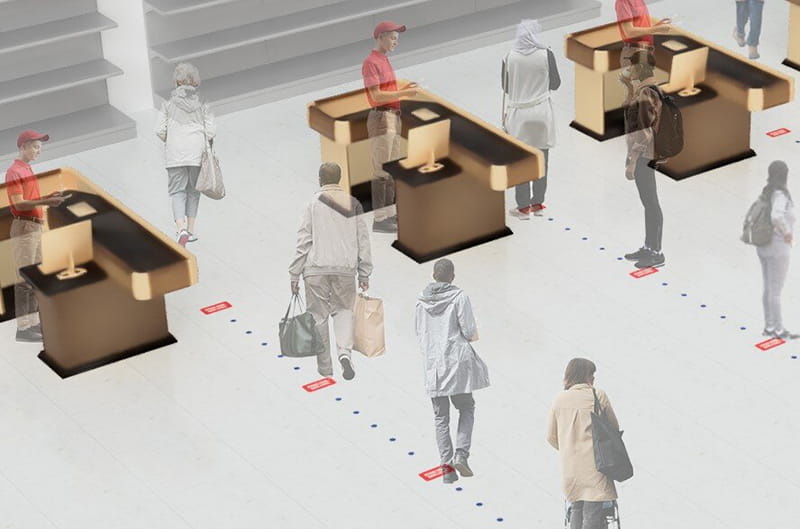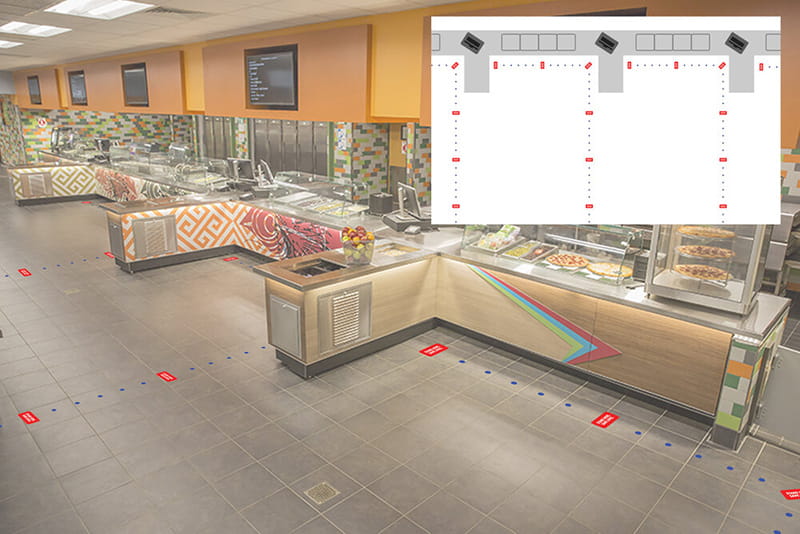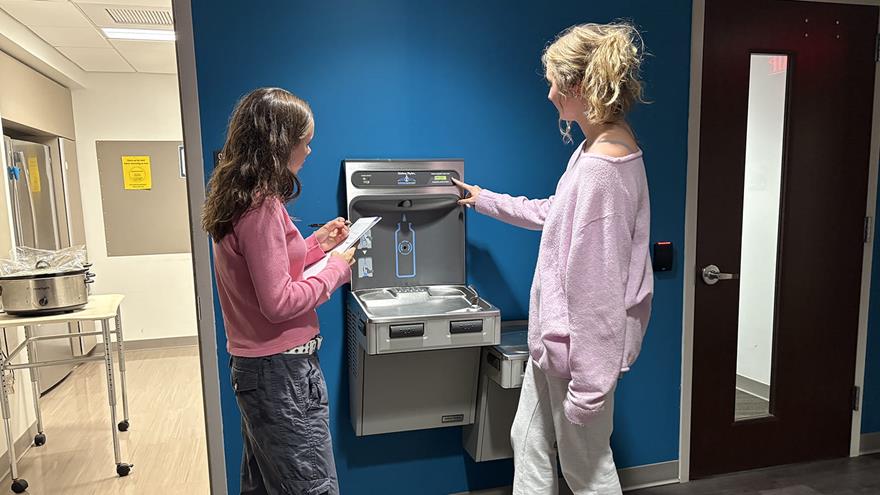Dragons Stick Together to Make Social Distancing Decals

Please visit the ‘Drexel’s Response to Coronavirus’ website for the latest public health advisories.
The idea came during a shopping trip at Target in early April.
“I was there to get some groceries, and I saw these labels on the ground,” remembered Jared Therrien ’18. “It basically had a little logo of a foot and there was a whole bunch of text saying to keep six feet away, and nobody was paying attention to them. And I thought to myself, ‘We could do this so much better.’”
Therrien, who graduated with a BS in product design and a minor in entrepreneurship and innovation, is the president and founder of Emergency Information Systems, a startup he created while he was a student at Drexel. He debuted the Wayfinder Safety System, which helps emergency responders find their way around schools and other high-occupancy buildings during a crisis, using printed numbers on doors or signs on exteriors. A volunteer firefighter cadet in high school, he was inspired by his own experiences and the Sandy Hook Elementary School shooting in his home state of Connecticut to start the project to help people. Years later, the intention is the same — but the crisis, and the labels, are different.
After coming back home from Target that day, he got on the phone with Nicole Feller-Johnson, an adjunct faculty member in the design research and product design programs in the Westphal College of Media Arts & Design, whom he had met as a student (she graduated with an MS in design research and an MS in fashion the same year as Therrien) and had been regularly collaborating with.
What if, he asked, they applied their emergency information systems label-making expertise to address this community issue with making sure people were aware of how far apart to stand away from each other in public spaces?
The end result was Emergency Information Systems’ new Project S•A•F•E initiative, of which Therrien is project manager and Feller-Johnson is the design lead for creative content. The duo was joined by a team of Drexel alumni, as well as a student on co-op, to quickly create, design and now ship these intuitive and easily comprehensible decals to be placed on the floor to encourage spacing between those waiting in lines in public places.
“We wanted these installations to be really visible and readable — which is, of course, number one — but they also have to be really intuitive for the businesses,” said Feller-Johnson. “There are sort of two users: the customers, who these decals are for, but also the businesses themselves, which have to install it and use it and navigate the use of it.”
The labels include a system of small marks that separate every foot, with a stop label at every six-foot mark, and can be easily placed not just in a straight line, but in any way to accommodate corners and turns down and around corridors and aisles and checkout lines. Plus, they can be applied to any hard surface: wood, vinyl, and linoleum tile. Plans are also in the works for new decals to be used on low-pile carpet and sidewalks (able to be placed on concrete, asphalt and brick) to accommodate lines being formed outside of buildings.

The company is donating labels (and shipping them for free) to life-sustaining businesses like COVID-19 testing sites, COVID-19 treatment centers, food banks, food pantries, soup kitchens and shelters. The company is offering a 1-for-1 match system with paying partners, in which Emergency Information Systems will donate one set of labels for every set of labels sold. In the first two weeks, there were hundreds of orders for businesses not just in Philadelphia and the East Coast, but all around the country. And that’s just the start.
“We see this project and this product as being a need that's ongoing as the CDC restrictions relax and as things begin to reopen,” said Feller-Johnson. “We think this will be even more needed than it is now, because as we have to remain socially distant but still start to re-engage in a community sense, we’re going to really need ways of mitigating potential harm.”
Besides Therrien and Feller-Johnson, the team working on this endeavor include:
- Elise Krespan (MS Biology ’18, MS Design Research ’18), design research, adjunct design research faculty member in the Westphal College of Media Arts & Design and the College of Arts and Sciences
- Van Agens (BA Communications ’18), PR and outreach
- Ryan McGlennon (BS Game Media, Art and Production ’18), web design
- Tyler Haas (BS Product Design ‘21), product design student co-op, graphic design and implementation
“We started doing this with very little notice,” said Therrien, “and everybody just jumped right in and started working. I think that’s a very ‘Drexel’ kind of attitude. The 10-week quarter never really leaves you, discipline-wise, that’s for sure.”
Therrien came to Drexel with the idea of his Emergency Information Systems company in his head, and started and grew the company through the Close School of Entrepreneurship’s Entrepreneurship CO-OP Award, in which he received $15,000 in funding, office space at the Baiada Institute for Entrepreneurship and further mentorship from Close School faculty and staff. In 2017, he also came in second place in the Baiada Institute for Entrepreneurship’s Business Plan Competition. Likewise, Feller-Johnson was a recipient of Drexel’s 2018 Most Original and Creative Graduate Research Award for her design research graduate thesis.
The team’s Drexel education, and experiences, played a huge role in Emergency Information Systems’ ability to launch and sustain this project, according to Therrien .
“I keep thinking about all these things that I had learned at school and now it’s coming full circle in a real-world project,” he said. “And the professional help that I’ve had from my team — from graduates two years out to a student who just has a really different skill set than us, even though it's from the same major, to faculty that have been in the field for a number of decades — is just amazing. You get to see what can happen really quickly when a bunch of likeminded individuals are willing to share their skillsets and not hoard knowledge.”
Drexel News is produced by
University Marketing and Communications.

